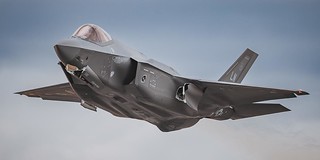A detail of the US Army indicating that it is preparing for a long stay in Europe
The Russian invasion of Ukraine is leading NATO to mobilize more and more troops in the countries bordering Russia to contribute to its defense.
The United States is also contributing to that military deployment, including armored forces. A few days ago, the US Army released this video showing American M1A2 Abrams main battle tanks at the German base in Mannheim, preparing for deployment to the German Grafenwoehr training ground. The images were recorded on February 28:
The US Army has released more images of this deployment, which you can see below:

In this image, taken on March 1 at the aforementioned Mannheim base, we can see an Oshkosh M-1070 truck with a HETS-type gondola transporting an M-1A2 Abrams main battle tank.

Here another image of the mobilization of M-1A2 Abrams in Mannheim with more Oshkosh M-1070 trucks with a HETS-type gondola.

In this other image, taken yesterday in Grafenwoehr, we see two Oshkosh L-ATV multipurpose vehicles from the US Army's 3rd Infantry Division.

One more photo from Grafenwoehr, showing M-2 Bradley infantry fighting vehicles, Oshkosh L-ATV multipurpose vehicles, M-577 command vehicles, and an M-113 ambulance, among others.
There is one thing that is very striking about these photos. Here are some other images from recent years:

In September 2020 we saw these M-1A2 Abrams here on maneuvers in Germany. They belonged to the 1st Cavalry Division.

In October last year we saw these Abrams in Poland, belonging to the 1st Infantry Division “Big Red One”. If you look closely, in these two images you can see the Abrams with a desert scheme, in the case of Poland covered with camouflage nets to hide that light color. However, in the photos and in the video that we have seen above, all the vehicles wear the three-color camouflage, something that has not been common in the US Army in recent years, not even in its participation in maneuvers in Europe.
This three color scheme (black, brown and green) is called NATO camouflage and was introduced in 1984 in the US Army and also in other armies of the Atlantic Alliance. Its purpose was, in the first place, to facilitate the recognition of friendly vehicles on the battlefield, and in a second order, to make it difficult for the enemy to determine to which country the vehicles in front of him belonged (because they could be from any army). of NATO), which would give him less information about the enemy's movements. This camouflage was specially designed for Europe, where forests and mountainous places abound.
Several NATO countries, including Germany, continue to use this NATO camouflage. In Spain, the Army uses it on their Leopard 2A4s (since they were bought second-hand from Germany, and left with their original camouflage) and in the Marine Corps. The rest of the Army vehicles are painted olive green. Although never completely abandoned, the US Army and Marines increasingly displaced this camouflage in favor of the desert scheme, first in the aftermath of the 1991 Gulf War, and later because of the wars in Afghanistan and Iraq. Basically, the strategic priorities of the US had changed and they had to adapt to the desert environment of the countries in which most of the US military operations have been carried out in the last 20 years.
This change went so far that when M-1A1 Abrams are upgraded, the paint is removed at the factory and the desert scheme is added. In some cases, these cars have been painted with an olive green color applied over the desert scheme, which tends to generate a lighter green.
The three-color NATO camouflage had more than just mimetic functions. The composition of the paint was prepared to combat certain substances in the event of chemical warfare, so that decoration had to be applied in the factory or in specially prepared places, since it included toxic components. The painting is done by spray (which generates blurred edges) and following the same pattern on all vehicles.
The video and photos that we have seen at the beginning of this entry indicate that these vehicles have been recently repainted (the paint is like new) and in a bit of a hurry, since some parts of the vehicles still show the desert color that has been left behind. under the camouflage, if you look closely at the images. That the US Army has proceeded to recover this camouflage indicates that it is preparing for a long stay in Europe and for something more serious than some maneuvers, since otherwise they would maintain the desert scheme that they used until now in exercises in the Old Continent. It is clear that the invasion of Ukraine has radically changed the strategic priorities of the US and that is also reflected in the decoration of its military vehicles. Aesthetically, the US Army has returned to the last years of the Cold War.
|
Don't miss the news and content that interest you. Receive the free daily newsletter in your email: |
- Most read
- A Corporal of the Regular Forces of the Spanish Army dies in an exercise in Poland
- Portugal confirms that it has begun its transition to the F-35 and indicates bad news for Spain
- Sierra Army Depot, a huge United States base with hundreds of Abrams tanks stored
- The deployment of Spanish soldiers of the Regulars and BRILAT near Russian territory
- “Cześć jego pamięci!” Poland dedicates the tribute to its Fallen to a Spanish soldier
- Eurofighter vs F-35: the opinions of professional pilots on these advanced fighters
- Spain will modernize its fleet of firefighting seaplanes and buy seven new DHC-515s

 ES
ES







Opina sobre esta entrada: